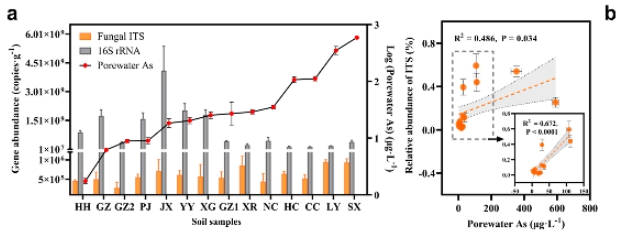Abstract:
Trivalent arsenicals such as arsenite (As-III) and methylarsenite (MAsIII) are thought to be ubiquitous in flooded paddy soils and have higher toxicity than pentavalent forms. Fungi are widely prevalent in the rice rhizosphere, and the latter is considered a hotspot for As uptake. However, few studies have focused on alleviating As toxicity in paddy soils using fungi. In this study, we investigated the mechanism by which the protein TaGlo1, derived from the As-resistant fungal strain Trichoderma asperellum SM-12F1, mitigates As-III and MAsIII toxicity in paddy soils. Taglo1 gene expression in Escherichia coli BL21 conferred strong resistance to As-III and MAsIII, while purified TaGlo1 showed a high affinity for As-III and MAsIII. Three cysteine residues (Cys13, Cys18, and Cys71) play crucial roles in binding with As-III, while only two (Cys13 and Cys18) play crucial roles for MAsIII binding. TaGlo1 had a stronger binding strength for MAsIII than As-III. Importantly, up to 90.2% of the homologous TaGlo1 proteins originate from fungi by GenBank searching. In the rhizospheres of 14 Chinese paddy soils, Taglo1 was widely distributed and its gene abundance increased with porewater As. This study highlights the potential of fungi to mitigate As toxicity and availability in the soil-rice continuum and suggests future microbial strategies for bioremediation.
Key Words:
rice rhizosphere;;cysteine residues;;detoxification;;site-directed mutation;;isothermal titration calorimetry



